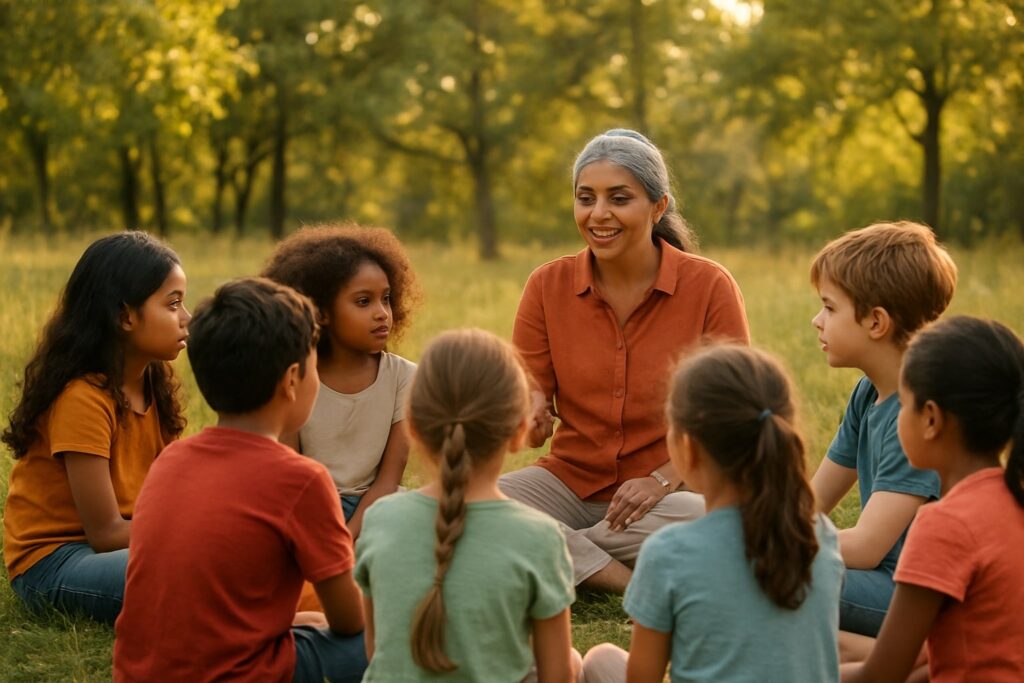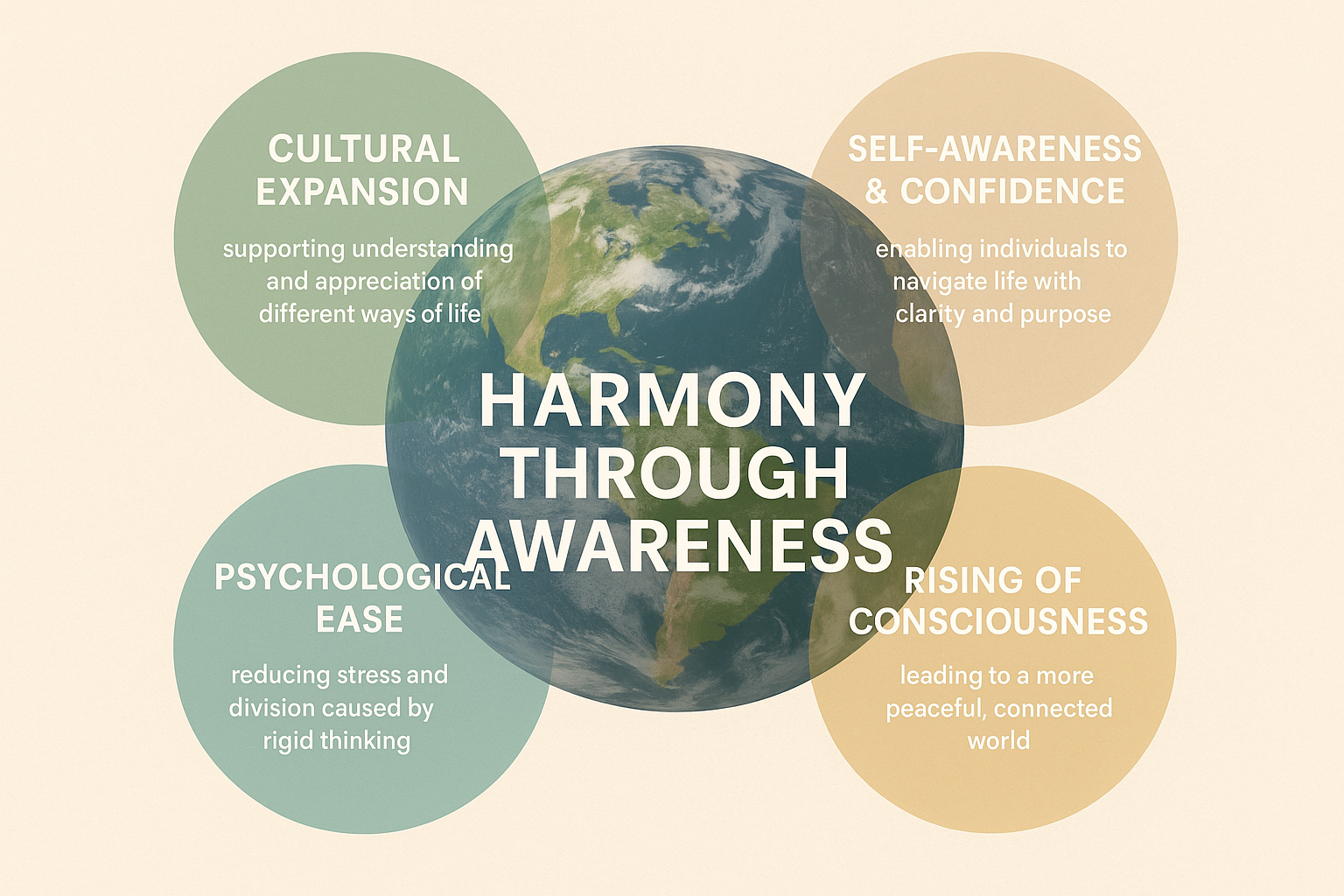By Martine, The Netherlands
Table of Contents
Introduction
We are living in a transitional period. Technology has reached its peak, and wars have persisted for centuries. Something different is needed for a true change. A lasting shift towards harmony depends deeply on the rise of human consciousness.
From a young age, our awareness begins to narrow due to various influences, such as parenting, education, religion, and society. Here, we will explore how a transformation of human awareness can unfold.
Why is awareness important?
To understand awareness, we must first understand how life functions. Both consciousness and nature are essential for the expression of life. The world around us exists as we perceive it because of the presence of consciousness.
Without awareness, consciousness doesn’t get space, and life becomes more driven by nature, leading to a more instinctive, survival-driven existence, filled with struggle and conflict. As humans, we have the unique ability to connect with the vastness of consciousness, allowing for a different quality of life.
We cannot exist without nature, nor can we live purely in consciousness. However, we have the capacity to find a balance between the two. There is even a possibility for them to merge into a unified experience. This is the essence of Yoga, the path of union. Expanding awareness is crucial for the upliftment of human consciousness.

How does awareness develop?
From an early age, awareness is often restricted due to external factors such as the environment we grow up in, the language we speak, the education we receive, and societal expectations. The drive to “become something” or “achieve something” can further narrow our perception.
To truly evolve, we must move beyond rigid beliefs. When awareness is limited, it creates division, this is the root cause of many human struggles. Narrow thinking leads to decisiveness, leading to psychological disbalance. When we rigidly hold onto conclusions, we block openness to new possibilities. Expansion of awareness means embracing the unknown and remaining open to fresh perspectives.
Is there space for the other?
This is a crucial question to ask: Is there space in our awareness for others?
If children are exposed to different ways of living from an early age, they will not grow up believing that their way is the only way. Such a belief can be a form of mental violence, leading to division rather than connection.
When awareness expands, it creates the ability to listen, to feel empathy, and to nurture love and affection, whether in families or even at an international level where conflicts arise.
Expanding awareness

By broadening our perspective and opening our consciousness to other realities, we support Self-evolution. There is more than one way to live life. If children are introduced to diverse cultural experiences, like food, clothing, language, homes, schools, travelling, they naturally develop a broader understanding of the world.
Awareness is about being deeply connected to the reality we live in.
Who am I?
Expanding awareness also leads to an essential question: Who am I?
This question should always remain open-ended. It is not about saying, I am right. It is about embracing the uncertainty of existence while finding balance in it.
For example, whether one goes to school by bike or on foot should not define their identity or state of mind. If we allow fixed conclusions to rule our minds, they create inner rigidity and external violence. The question Who am I? should never have a definitive answer, it is a continuous exploration.
How can education support a new way of living?

How can we work towards a world without war in the next 20 years? How can we dissolve conflict from the planet? The answer lies in how we educate the next generation.
Education should not create separation but instead bring connection. By neutrally presenting different ways of life, without imposing beliefs, we allow children to expand their awareness naturally. This is not about learning facts; it is about experiencing a broader way of living.
A simple starting point could be introducing children to different types of food. From there, we can take the next step: What is the common element that unites us all? It is breath, the very air we all share.

Breathing with awareness brings a sense of unity and love. This can lead to practices like Pranayama, guiding children to experience how air flows freely, helping them realise that we all breathe the same air, we are all one. Such guidance can be supported through guided meditation, rooted in reality rather than illusion.
By planting this seed in young minds, we can globally connect children and create a world without war within a generation.
Vasudhaiva Kutumbakam – One globe, one family

The idea that the world is one family (Vasudhaiva Kutumbakam) can be powerfully conveyed through artistic and visual expressions. Just as food unites people at the same table, air unites all of humanity.
By presenting diverse ways of living through online platforms and educational initiatives, we can cultivate this awareness globally.
The future benefits of expanding awareness

By focusing on children and supporting global connection, we can plant the seeds for a future without war. This shift will bring immense benefits to humanity, including:
- Cultural expansion – supporting understanding and appreciation of different ways of life
- Self-awareness and Self-confidence, enabling individuals to navigate life with clarity and purpose
- Psychological ease, reducing stress and division caused by rigid thinking
- The rising of human consciousness, leading to a more peaceful, connected world
By expanding awareness and supporting connection, we take the first step towards creating a world of harmony, understanding, and unity.
Conclusion

The key to a harmonious world lies in the expansion of human awareness. By understanding the balance between consciousness and nature, we can move beyond the instinctive struggles of survival and embrace a more evolved way of living.
Awareness is often narrowed from childhood due to societal conditioning, but by exposing young minds to diverse perspectives, we can prevent rigid thinking and foster openness. Education plays a crucial role in this transformation, not by imposing beliefs, but by presenting life’s diversity in a neutral and experiential way.
When we recognise that we all share the same breath, the same planet, and the same fundamental human experiences, a natural sense of unity emerges. Practices like Pranayama and meditation can deepen this connection, allowing children to realise that we are all part of a single global family, Vasudhaiva Kutumbakam.
By planting these seeds in children today, a future where love, awareness, and understanding shape human interactions – free from war – becomes a possibility. The journey towards a peaceful world begins with expanding our own consciousness, because true transformation starts from within.
Word of thankfulness

Sharing in this way is only possible through the presence and guidance of Sage ViGo, who brings alive a new perspective on life and the role of education. A clarity rooted in the essence of ancient scriptures like the Patanjali Yoga Sutra, lived today and valuable for generations to come.
About the author

After exploring various paths in life, ranging from playing the French horn professionally and planning and programming for cultural centers, to organising congresses and events for local government and teaching Yoga to children, Martine eventually settled in India with her husband and daughter.
Realising that understanding one’s true Self is the ultimate purpose and the key to a joyful life, Martine dedicates her time to applying ancient wisdom in everyday living. She chose to embrace a Yogic way of life, under the guidance of Sage ViGo.




